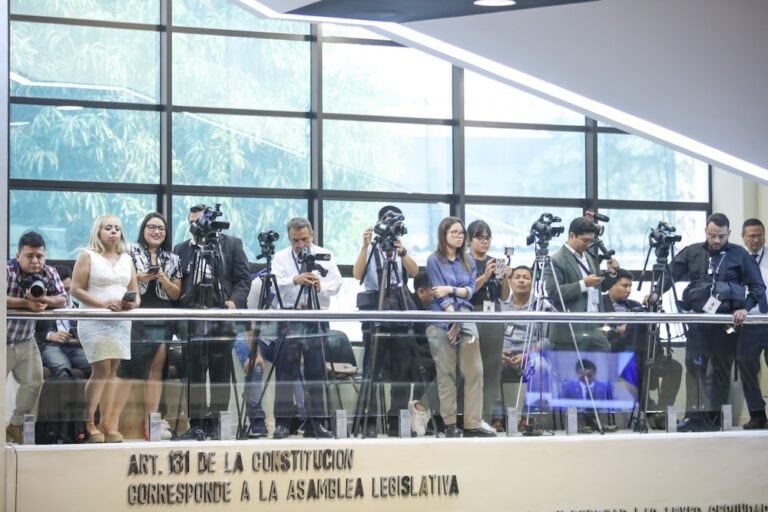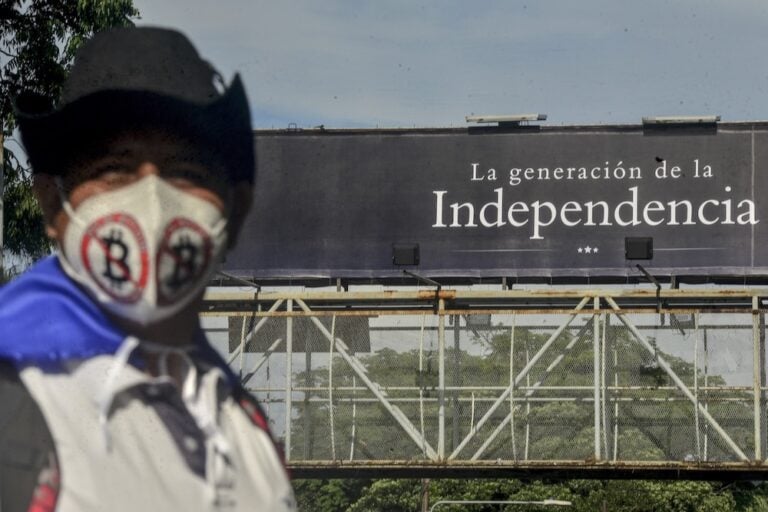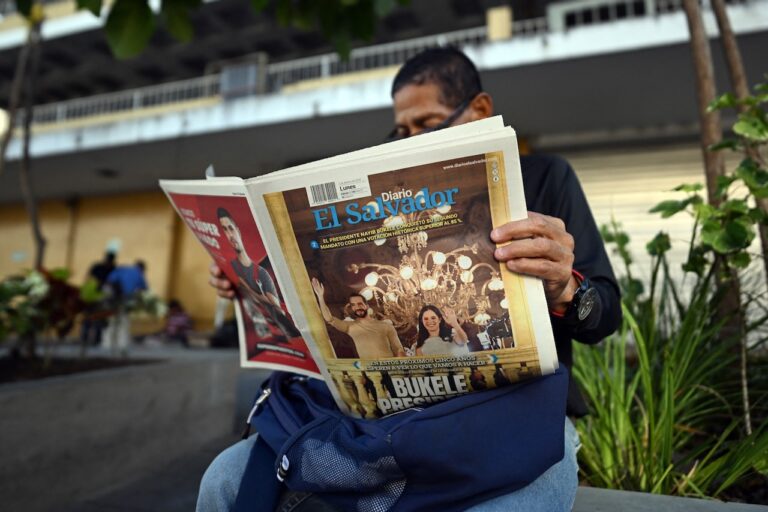(RSF/IFEX) – Reporters Without Borders has condemned attacks by demonstrators on a total of 13 journalists during protests against public transport and electricity price increases that shook the country from 4 to 7 July 2006. The press freedom organisation voiced its solidarity with the Association of El Salvador Journalists (Asociación de Periodistas de El Salvador, […]
(RSF/IFEX) – Reporters Without Borders has condemned attacks by demonstrators on a total of 13 journalists during protests against public transport and electricity price increases that shook the country from 4 to 7 July 2006. The press freedom organisation voiced its solidarity with the Association of El Salvador Journalists (Asociación de Periodistas de El Salvador, APES), which issued a report on the attacks.
“These events have revealed an alarming hostility felt by part of the population towards the media,” Reporters Without Borders said. “We appeal to the leaders of student movements and opposition parties to ensure respect within their ranks for the principle of press freedom and we support the call by APES for tolerance and respect for the work of journalists.”
Reporters Without Borders added, “The validity of a cause does not give its supporters the right to stigmatize the press on the alleged grounds that it does not give enough space to their cause.”
The first attacks took place near the El Salvador university campus on 5 July. Iván Pérez of Radio YSUCA was accosted and insulted while Ernesto Landos of the Teledos private television station was chased by a group of demonstrators who smashed the windscreen of his car. “El Diário de Hoy” newspaper photographer Felipe Ayala had his camera snatched from him and later returned without the memory card containing the shots he taken. A group of students also assaulted Carlos Henríquez, the correspondent of “La Prensa Gráfica”, a daily newspaper based in the western city of Santa Ana.
There was more violence against journalists at roadblocks erected on the outskirts of the capital on 7 July by supporters of the Farabundo Martí Front for National Liberation (FMLN), the former guerrilla alliance that is now an opposition party. Luis Ever Fernández of Canal 6 television station was badly beaten inside his vehicle by protesters trying to drag him out of his car, until a parliamentarian who was present intervened. At another roadblock, demonstrators daubed paint on the vehicle being used by Julio Rosales, also of Canal 6.
“La Prensa Gráfica” photographers Borman Mármol, Franklin Rivera, Félix Amaya and Alvaro Castaneda were meanwhile attacked and threatened near the international airport and stones were thrown at their newspaper’s vehicle. “El Día de Hoy” photographer Luis Villalta had his press card and camera grabbed from him. The camera was then returned without the memory card.
The same day in Soyapango, near the capital, Fidel Toloza of Teledos and his cameraman, Walter Ramírez, were both badly kicked and punched and then doused with tear gas as the town’s mayor, Carlos Ruiz, looked on.
Finally, during the trial of a protestor on 8 July, police confiscated the camera of Luis Herrador Funes, who works for an international news agency. They also seized an identification card identifying him by another name.
Ever since these events, technicians working for the Canal 2, Canal 4 and Canal 6 television stations – which are all part of the privately-owned Telecorporación Salvadoreña group – have refused to wear their work shirts with the company’s logo, for fear of further violence.


